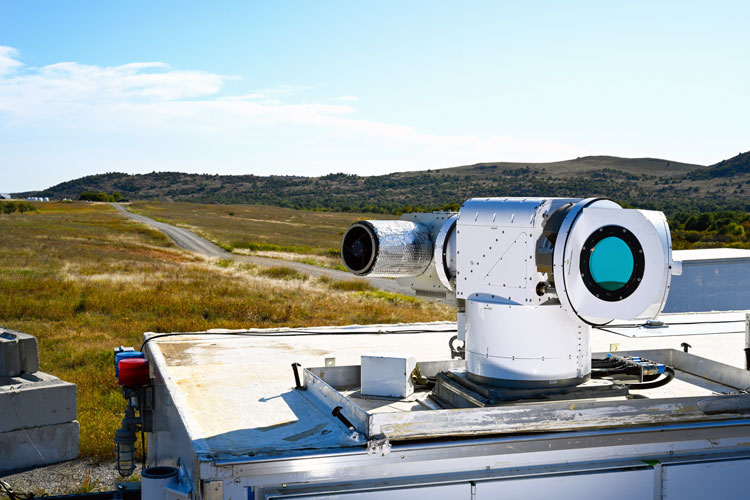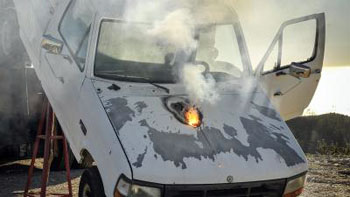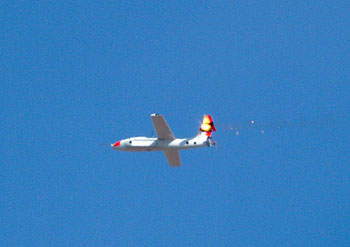INDIAN ARMED FORCES CHIEFS ON OUR RELENTLESS AND FOCUSED PUBLISHING EFFORTS

The insightful articles, inspiring narrations and analytical perspectives presented by the Editorial Team, establish an alluring connect with the reader. My compliments and best wishes to SP Guide Publications.

"Over the past 60 years, the growth of SP Guide Publications has mirrored the rising stature of Indian Navy. Its well-researched and informative magazines on Defence and Aerospace sector have served to shape an educated opinion of our military personnel, policy makers and the public alike. I wish SP's Publication team continued success, fair winds and following seas in all future endeavour!"

Since, its inception in 1964, SP Guide Publications has consistently demonstrated commitment to high-quality journalism in the aerospace and defence sectors, earning a well-deserved reputation as Asia's largest media house in this domain. I wish SP Guide Publications continued success in its pursuit of excellence.
HPM Armed Drones
The counter-drone arms race is leading to advance research and development to implement technologies that will detect and defeat swarms
 |
The Author is Former Director General of Information Systems and A Special Forces Veteran, Indian Army |
The emergence of commercial and military drones and their use as swarms have empowered terrorists and changed the face of battlefields. Use of drones in Iraq-Syria by the Islamic State, by terrorists against Russian bases in Syria, by Houthis attacking Saudi Arabia’s oil facilities, and drones playing havoc against Armenian defences in the Azerbaijan-Armenia conflict over Nagorno-Karabakh are some examples indicating severity of the drone threat. To add to this is the race to launch bigger swarm drones, which is seen from various competitions, demonstrations and displays of drone systems in events like the Olympics. Newer platforms are coming up for launching drones from the ground, air, sea underwater.
A 60-kilowatt ground-based laser weapon system mounted on a modified truck has been fielded in the US Army for destroying rockets, artillery, cruise missiles, drones, and other trucks or ground vehicles.
Consequently, the counter-drone arms race is leading to advance research and development to implement technologies that will detect and defeat swarms. Cyber solutions to counter drones have already been developed in systems that can identify and intercept commercially available drones, with their multi-spectral sensor system detecting and characterising incoming drones within seconds, before employing cyber electromagnetic activity to take control of the drone and defeat it. Modular fiber lasers are being experimented to develop powerful systems to generate a high power weapon beam that can continue firing endlessly. The laser being invisible to naked eye, use of such a weapon system can accurately aim, target and destroy the target(s) at the speed of light. Such an advanced system would generate less heat and can be contained in smaller packages than previous laser technology, serving on board multiple platforms.



The US firm Lockheed Martin had developed the Area Defence Anti-Munitions (ADAM) which successfully defeated small boats and rockets, while the Advanced Test High Energy Asset (ATHENA) system had stopped drones and a truck in their tracks. Research is on to integrate these systems onto aircraft, ground vehicles and ships. A 60-kilowatt ground-based laser weapon system mounted on a modified truck has been fielded in the US Army for destroying rockets, artillery, cruise missiles, drones, and other trucks or ground vehicles.
America’s High-Powered Electromagnetic (HPEM) research programme seeks to develop high-power electromagnetic technologies not only for directed-energy weapons, but also for cyber warfare, electronic warfare (EW), electronics-killing weapons, power electronics, and antennas. Concurrently, Electromagnetic (EM) Weapons Technology is moving new HPEM technologies into pulsed-power weapons, including developing compact repetitive pulsed-power topologies; investigating high-energy particle beams; and creating weak and strongly ionized plasmas using ultra-short pulse lasers (USPL).
News reports of April 2016 revealed that the US Air Force (USAF) had released a solicitation asking the industry to develop power sources and antennas for future high-power microwave (HPM) weapons and for other aerospace and defence uses; seeking to develop broadband high-power amplifiers, tunable high-power oscillators, and broadband antennas, with the requirement that these components and subsystems should apply to RF effects weapons for different-sized military platforms that work over a broad range of frequencies, pulse lengths, pulse repetition frequencies, and power densities.

Since high-power microwave (HPM) weapons focus microwave energy on targets to damage or destroy them, the USAF wanted research and development to center on tunable HPEM oscillators; broadband HPEM amplifiers; increased efficiency sources; radiating structures for these sources; and recommended infrastructure research to investigate these new HPEM technologies safely, including repetitive pulsed power and electromagnetic.
US Army was negotiating with the industry to develop HPM weapons payloads to enable new generations of drones or unmanned aerial vehicles (UAVs) to destroy or disable enemy drones
In August 2018, the US Army was negotiating with the industry to develop HPM weapons payloads to enable new generations of drones or unmanned aerial vehicles (UAVs) to destroy or disable enemy drones. Officials of the US Army Contracting Command announced plans to negotiate with the Lockheed Martin Missiles and Fire Control Division in Texas for an HPM UAV weapons project. The firm was asked to develop HPM airborne counter unmanned aircraft systems (CUAS) including the necessary development, integration, and support necessary to field HPM weapons-equipped drones or UAVs. The US Army specifically wanted development of HPM weapons and other kinds of UAV payloads able to disable or destroy adversary UAVs. Weapons payloads for UAVs under consideration included explosives, nets, entanglers, streamers, and HPM systems. High-power microwaves could destroy or disrupt an enemy UAV by destroying its antennas, data links, guidance, and communications subsystems, as well as blinding the enemy UAV's RF and electro-optical sensors.
Recent reports confirm that Lockheed Martin has developed and is now offering MORFIUS, a drone armed with High-Powered Microwave (HPM) to defeat or kill drone swarms out of the sky. MORFIUS is a reusable drone that can fit inside a six-inch diameter launch tube and weighs less than 30 pounds or 13.6 kilograms. It is light and versatile enough to be attached to ground stations, ground vehicles or aircraft. Working as part of a layered approach to counter drone defence, MORFIUS units will be launched at hostile drones or drone swarms and then disable them in close proximity with potentially one gigawatt of microwave power; a million times the power of a standard 1,000-watt microwave oven.
Lockheed Martin has developed and is now offering MORFIUS, a drone armed with High-Powered Microwave (HPM) to defeat or kill drone swarms out of the sky
High-power microwaves represent a class of non-lethal weapons designed to destroy or disable enemy electronic systems with jolts of powerful electrical energy. It can fry electronics in much the same way as the electromagnetic pulse (EMP) from a nuclear detonation can disrupt electronics. China and Russia possess the capabilities of fielding high-power microwave. China reportedly used microwaves against US personnel in China and Cuba albeit this has remained somewhat of a mystery.
Galled by India occupying strategic heights south of Pangong Lake under Operation ‘Snow Leopard’ during 2020, Beijing lied that PLA had used HPM weapons against Indian troops on some heights, which was propaganda to soothe Chinese public opinion. Notwithstanding this, India needs to hasten drone and counter-drone technologies including HPM weaponry to cater for emerging threats. This can be speeded up in conjunction with strategic partners.





